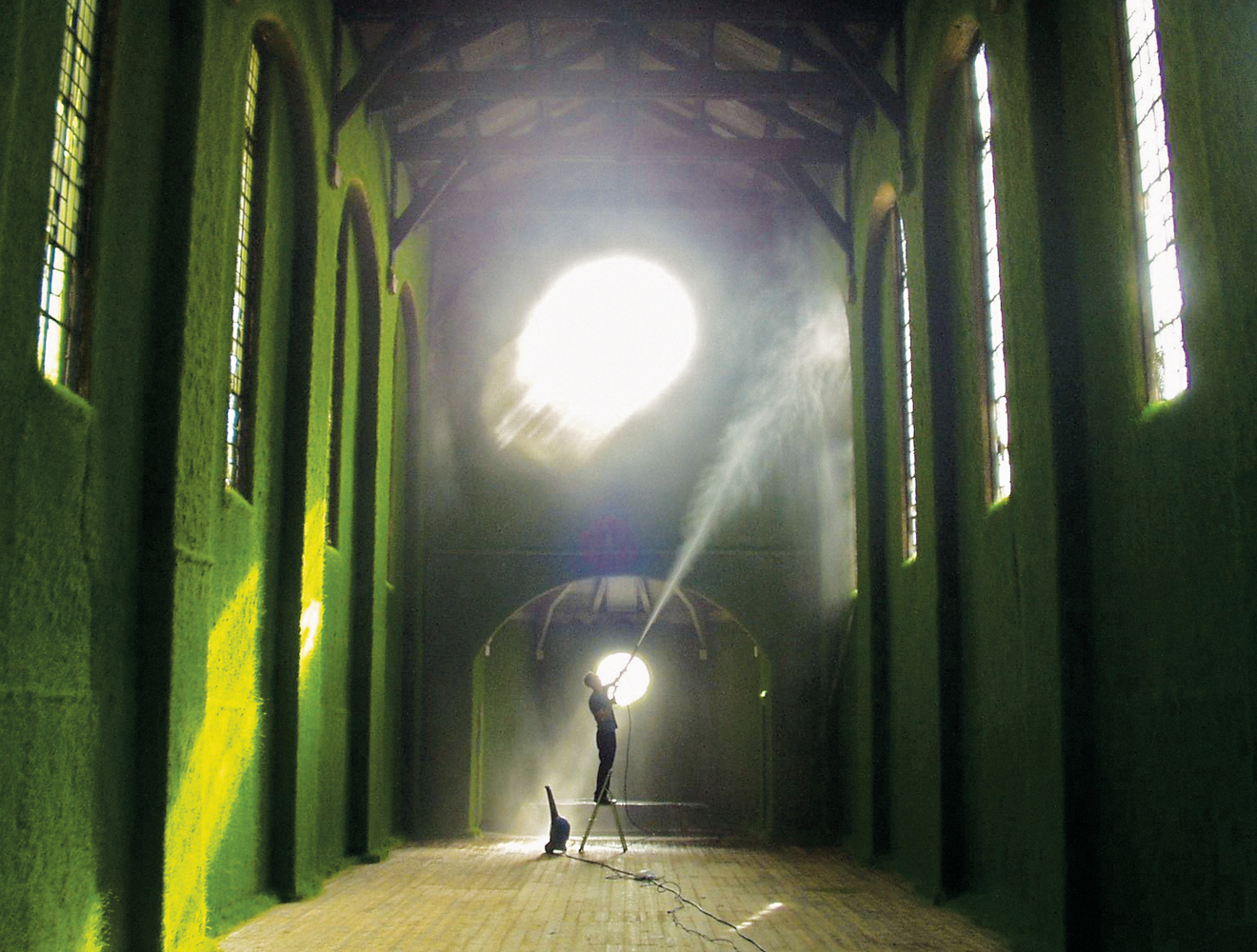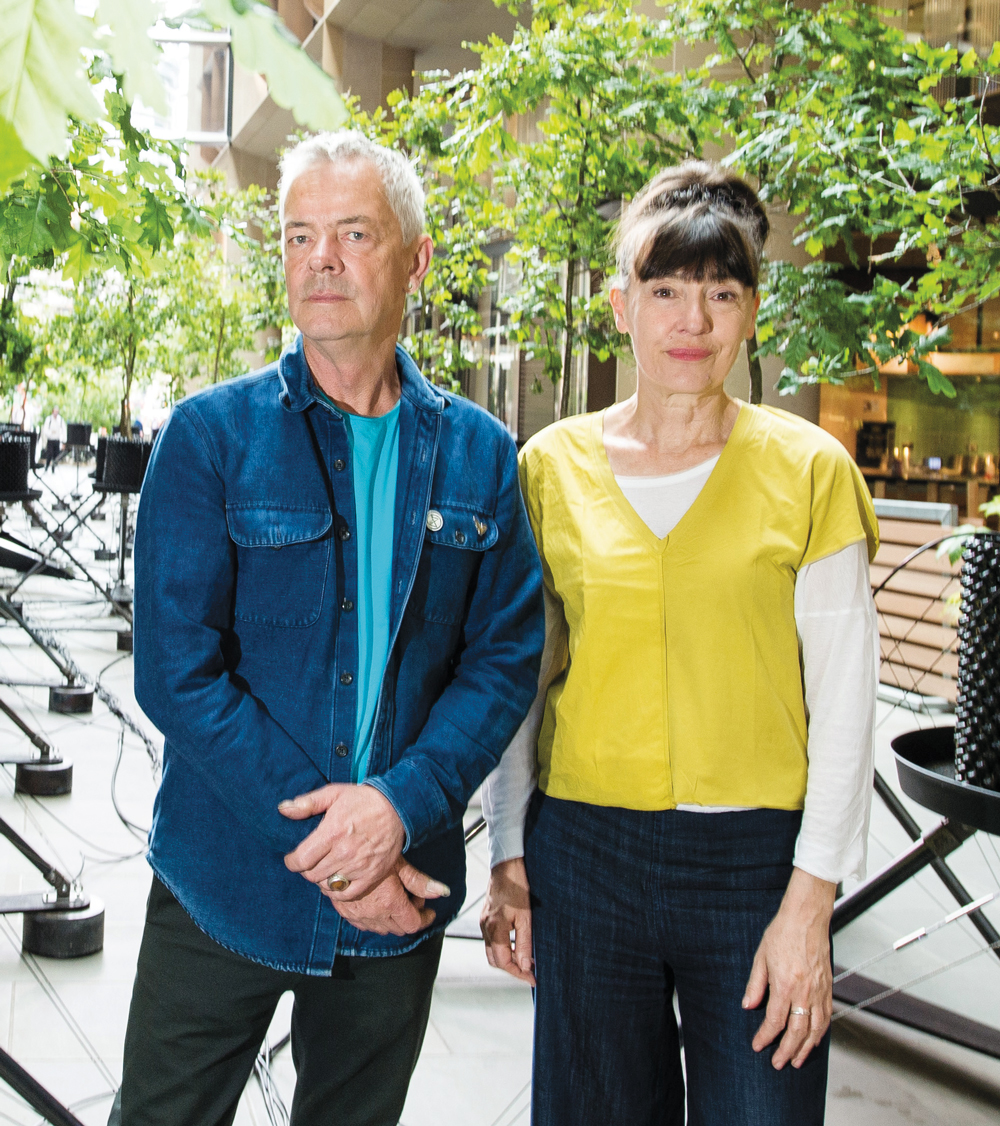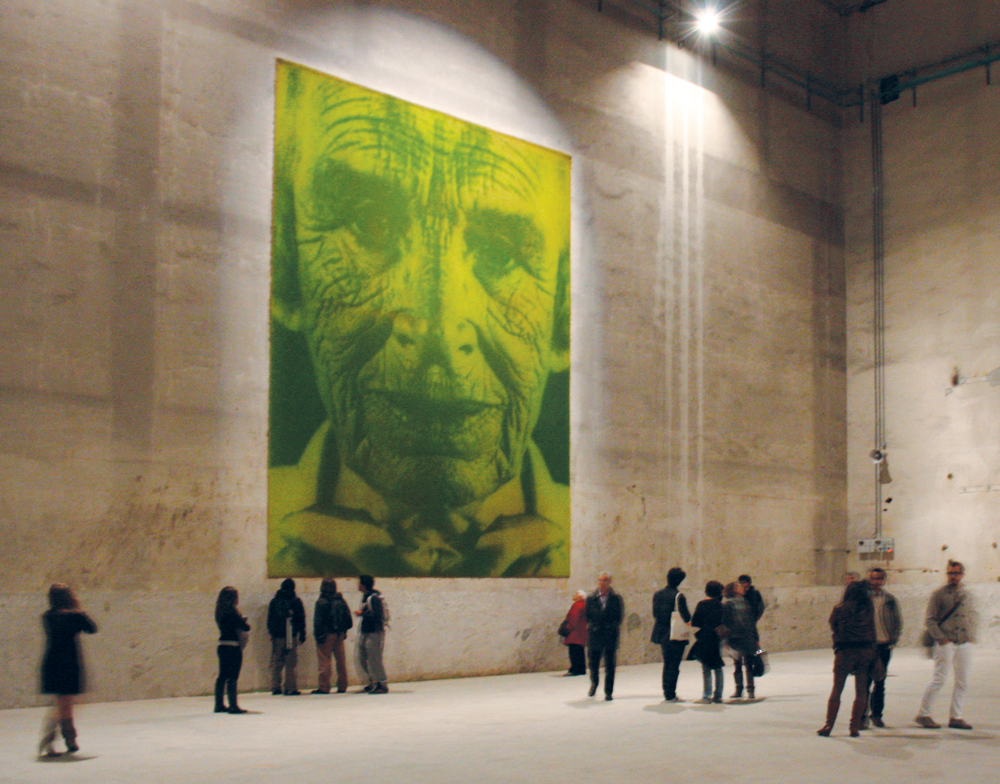InStudio: Art at the End of the World

Ackroyd & Harvey, Dilston Grove, London, 2003. "Working with sound artist and composer Graeme Miller, Ackroyd & Harvey temporarily transformed ... a de-consecrated and now derelict church in Bermondsey, into a verdant green chamber of living grass."
From certain vantage points, art is activism. Artists – given the platform and the will – are in a unique position to speak to and from places of power, paradoxically, benefitting from the commodity of culture.
In 2019, it’s a position that is reaching critical mass: Eight artists demanded their work be removed from the prestigious, often career-making Whitney Biennial in protest of the museum’s link to a controversial teargas company; The Sackler family — owners of OxyContin-maker Purdue Pharma, whose profits reached the billions throughout the opioid crisis — have, at the behest of artists and activists, had their name removed from the walls of the Louvre and had all future gifts denied by the Guggenheim.
But some believe that climate change, the most immediate global crisis, has yet to hit the art world with the urgency it demands. United Kingdom-based visual arts duo Heather Ackroyd and Dan Harvey, known collectively as Ackroyd & Harvey, have long been addressing climate change and ecological issues in their work.
More recently, the artists have been at the forefront of Culture Declares Emergency, planning protest performances including one at the Tate Modern in April of 2019. The protest included performance artist Zena Edwards wearing a coat resembling a thick fur, a garment created by Ackroyd & Harvey that was actually made of living grass.
In the wake of the protest (as well as additional protests organised by Extinction Rebellion in central London and across the U.K.) the Tate and numerous other cultural organizations declared a climate emergency and announced ambitious promises of more sustainable practices.

Dan Harvey and Heather Ackroyd
Ackroyd & Harvey formed in 1990, having both independently fostered practices centered around ecology. The duo has shown extensively internationally, including a commission for the inauguration of the David Attenborough Building in Cambridge, were guest faculty at Banff Centre in 2016, and will be presenting a visual arts lecture series at the Centre in September of 2019 as part of their residency, Earthed.
They have been most interested in the processes of plant life, with much of their work focused on creating living photographs with grass as the photo paper. As the climate crisis has worsened, the message of Ackroyd & Harvey’s biological-based practice has taken on new meaning.
“Photosynthesis – which so much of our work has been based upon – is something that is fundamental now,” Ackroyd says via video call from their London studio on an unusually hot summer afternoon. “The more trees you have the more oxygen you have, the [fewer] trees you have and the more fossil fuels you burn, the less oxygen we have. This fundamental process is becoming increasingly more important.”
Climate change’s pressing importance is an inescapable fact, so much so that its impending impact is no longer an issue that can be considered secondary even (if not especially) when it comes to art making. “I just realized if you come and look at our library, there are art books, but I don’t gravitate towards critical art theory. The books right next to the bed are around ecology, climate, maybe neuroscience to some extent,” explains Ackroyd.
Their creative kinship isn’t to be found in arts-exclusive circles, but rather in the cross-discipline community made up of those who recognize the calamitous reality we are in. “I just think we are in such a deeply precarious position. When you meet people who recognize the enormity of what is happening, there is both a sense of relief and sense of quiet ‘Oh my god.’”

Ackroyd & Harvey, Testament, Milan, 2011.
So what then are we to make of an artist’s specific responsibility to the issue of climate change? This, in part, involves a distancing from what we have come to recognize as the art world itself. “Our artistic process comes from observing natural processes, and that is becoming increasingly more important,” explains Harvey. “I think [we’re] really trying to understand and question the direction the world is heading in. And that questioning [is fundamental] in our practise.”
As an international art scene becomes more readily accessible, its impact on the environment is an oft-overlooked aspect of a booming art economy. “There are going to have to be some very systematic shifts of how we are trading [culture] and how we are making the materials we choose to make and the processes we choose,” says Ackroyd. “Inevitably, there has to be a raised criticality. I can’t see it as being a kind of add-on. It has to be right at the centre, now, moving forward.”
Art as political protest may not only be a means to change, it may be a mode of existence. “Some scientists are now saying that we could see the collapse of civilization as we know it by 2050,” says Ackroyd. “So where does our critical knowledge and acceptance of art come into play? When, actually, we are going to have to be on the frontlines of survival?”
But art’s great strength is in its inborn ability to conceptualize – science, philosophy, humanities, ecologies – through objects. In critical times of need, art can engender community. For Ackroyd & Harvey, it’s community action that is so necessary at this moment.
Through the Earthed residency, the duo set out to alarm, but not to depress participants or repress action. “We don’t want to create that level of unrest, or a deep emotional unease,” says Ackroyd. “Yes we are in a really, very challenging place, but what can we do together? And what is the strength of us meeting at this moment in time, in Banff? What is our community going to draw out of that and where can we go?”
“How you support each other is through the growth of community,” adds Harvey. Perhaps the artist’s essential ability is not only to create work, but to assemble an audience to witness the very culture at risk.
Heather Ackroyd and Dan Harvey were generously supported through the Gail and Stephen A. Jarislowsky Outstanding Artist Program.